This post may contain affiliate links. Please read my disclosure and privacy policy.
If you love baking with almond flour, but don’t love how expensive it is at the grocery store, try making it at home! It’s cheaper than store-bought options, and is ready in just minutes when you use a food processor or blender.
Can You Substitute Almond Flour for All-Purpose Flour?
One of the most common questions I am asked is how you would substitute almond flour for all-purpose flour, to make a recipe healthier or naturally gluten-free. If a recipe calls for eggs, I’ve found that you can usually swap almond flour for all-purpose flour using a 1:1 ratio, which makes it an ideal alternative. However, I recommend testing this with a recipe before serving it to company.
Because almond flour is higher in fat and protein than all-purpose flour, it’s not the best substitute when making a loaf of bread or anything cake-like that does NOT call for eggs. Instead, I recommend looking for almond flour recipes that have already been tested, so you won’t have to do the guesswork and potentially waste ingredients.
How Healthy is Almond Flour?
Compared to white all-purpose flour, almond flour is high in protein and monounsaturated fats to help leave you feeling satisfied. Just one ounce of almonds has 6 grams of protein and 3.5 grams of fiber!
Because almond flour is simply ground almonds, which are a good source of magnesium, it may also help with blood sugar control and lowering blood pressure levels.
Is Almond Flour Considered Low-Carb?
I think almond flour is a great choice for low-carb baking. A 1/4 cup of blanched almond flour has 6 grams of carbohydrates and 3 grams of fiber, so it has 3 grams of net carbs. For comparison, a 1/4 cup of all-purpose flour has nearly 24 grams of carbohydrates and less than 1 gram of fiber.
Is Almond Flour Good for Keto?
If you’re following a keto diet and need a flour alternative, I think almond flour is a good option since it has only 3 grams of net carbs. On a Keto diet I wouldn’t imagine that you’d want to make too many sweet baked goods, but you can make low-carb almond flour pancakes without maple syrup to get a bread-like fix!
What is the Lowest Carb Flour?
If you’re interested in other gluten-free & grain-free flours, I thought it might be fun to compare a few options. Below you’ll see the amount of “net carbohydrates” (which are the carbohydrates minus the fiber) in 1/4 cup of the following flours:
- Almond Flour: 3 net carbs
- Coconut Flour: 4 net carbs
- Tigernut Flour: 9 net carbs
- Cassava Flour: 25 net carbs
- Arrowroot Starch: 27 net carbs
As you can see, almond flour is the lowest carb flour, followed closely by coconut flour. Keep in mind however, that you can not substitute almond flour for coconut flour. Instead, look for coconut flour recipes that have been specifically developed to use that high-fiber flour.
Is Homemade Almond Flour Cheaper Than Store-Bought?
How does the cost of making homemade flour compare to buying it at the store? It used to be more of a drastic difference (close to a savings of $3 per pound), but I’m updating this post to reflect current 2019 prices.
Here’s the math:
- 8 oz. blanched slivered almonds from Trader Joe’s currently costs $3.49. That comes to about $0.44 per ounce.
- One pound of blanched almond flour from Trader Joe’s currently costs $7.49, which comes to abouve $0.47 per ounce.
- 3 pounds of Honeyville Blanched Almond Flour (from Amazon with free shipping) currently costs $23.35. That comes to $0.47 per ounce.
So, when you make your own almond flour you save roughly $0.50 per pound. This cost savings might not be motivation enough for you to make your own almond flour at home, but there’s still an advantage to those who can’t find prepared almond flour in their area.
It’s also nice to make your own almond flour if you don’t need that much of it for a recipe. If you only need a 1/2 cup of almond flour, you can easily grind your own without worrying about storing the rest of a big bag for months.
Almond Flour vs. Ground Almonds
When a recipe calls for almond flour, it’s most likely referring to blanched almond flour, which is made from almonds that have had their skin removed. Blanched almond flour is great for making authentic-looking baked goods with no brown flecks in the batter.
Ground whole almonds are referred to as “almond meal” and can be used interchangeably in most almond flour recipes. However, keep in mind that the texture and appearance will be slightly different if you make this swap. Almond meal tends to make baked goods more cake-like in texture, so cookies won’t be as crisp or buttery with this alternative.
How to Make Your Own Almond Flour
Making your own almond flour at home is as simple as adding blanched almonds to your food processor or blender, and processing them until they are finely ground. However, there are a few tips & best practices to keep in mind:
- One cup of slivered almonds = about one cup of almond flour.
- One 8 oz. bag of these raw blanched slivered almonds turned into exactly 2 cups of almond flour–> just what you need for my almond flour cookie recipe!
- Only proess one cup of almonds at a time. Blending more than that creates an uneven texture, so you’ll wind up with clumps of un-ground almonds.
- If you don’t mind seeing specks of brown in your resulting baked goods, you can also use regular whole almonds (non-blanched) to make almond meal. Almond meal makes “cakier” baked goods, rather than giving baked goods a buttery, shortbread-texture the way almond flour does.
I find that I get the best, most finely-ground results using my Vitamix blender, but a food processor can definitely be used if that’s all you have. The resulting baked goods will just be slightly grainier that way.
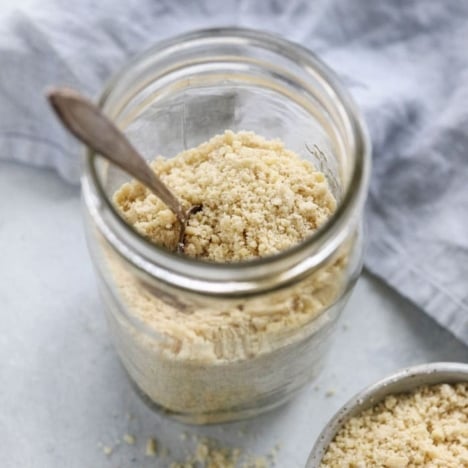
Ingredients
- 8 ounces blanched almonds , whole or slivered
Instructions
- Place the blanched almonds in a high-speed blender or food processor, and process until they are finely ground. If using a high-speed blender, be sure not to over-process as the almonds will eventually start to release their oils and become almond butter.
- For best results, do not blend more than 8 ounces of almonds at a time. (I tried using 16 ounces and couldn't get them evenly ground.) For the most finely-ground results, I've found a blender works best, but the flour I made in the food processor also works for making almond flour recipes-- the final product is just slightly grainier.
- Store leftover almond flour in an airtight container in a dark pantry, or better yet in the fridge or freezer for the longest shelf life. Almond flour can keep well for up to one year if it's not exposed to heat or moisture.
Nutrition
Per 1/4 cup: Calories: 167, Fat: 14g, Carbohydrates: 5g, Fiber: 2g, Protein: 6g
—
I hope this helps you all create even more almond-flour-based goodies in the future!
Reader Feedback: Have you tried making your own flours before? Let me know your favorite way to use almond flour in the comments below!
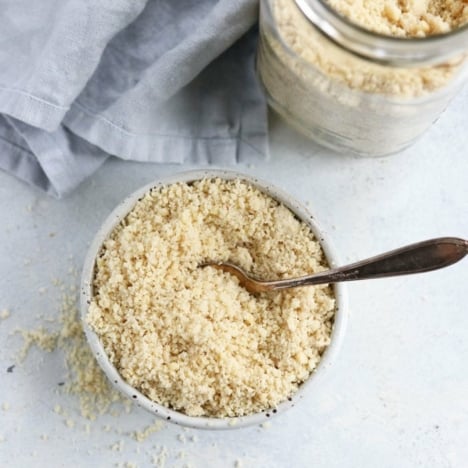
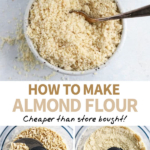
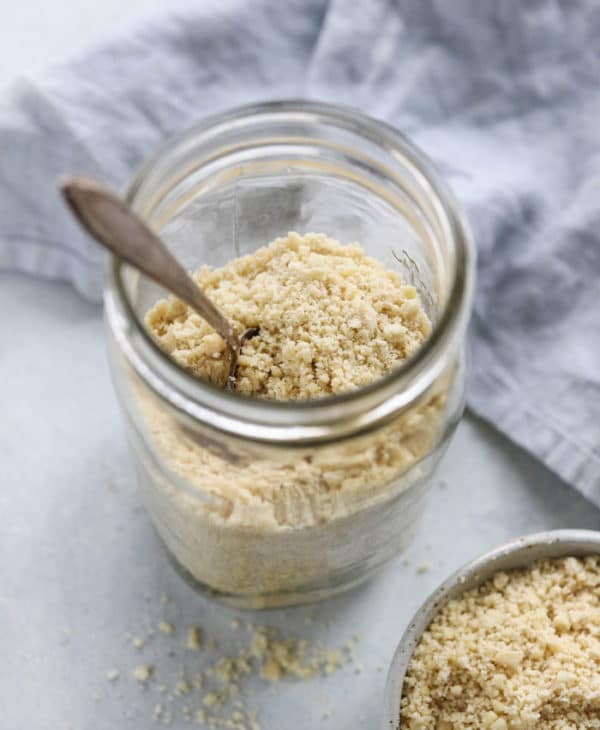
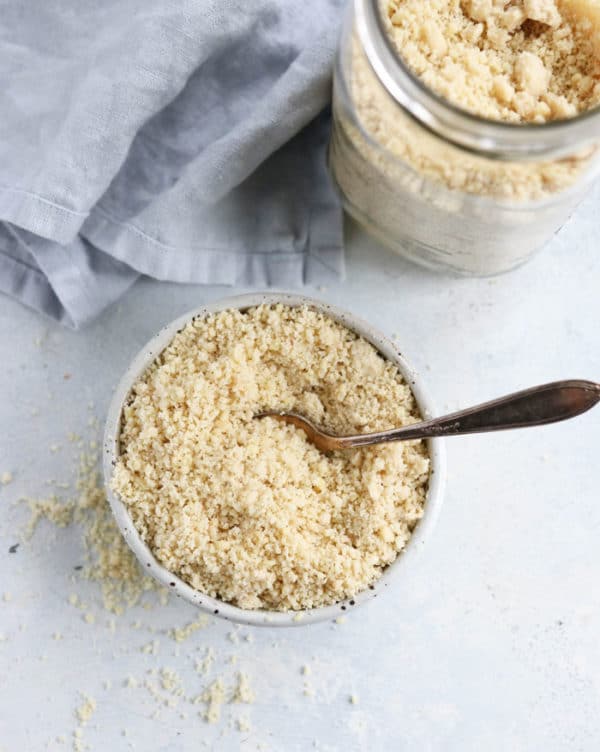


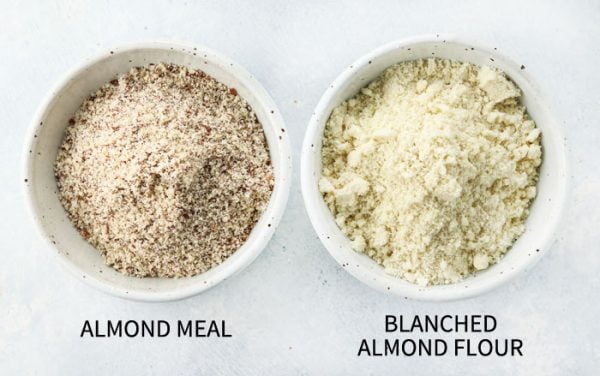
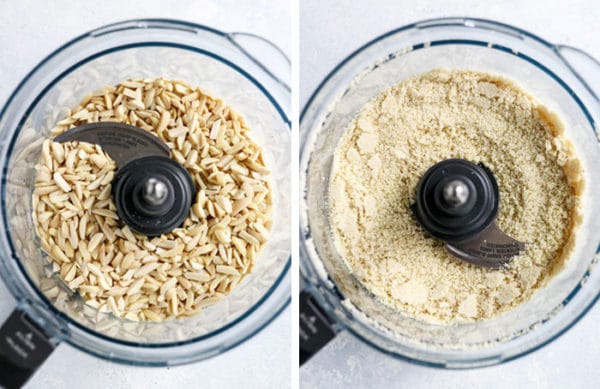


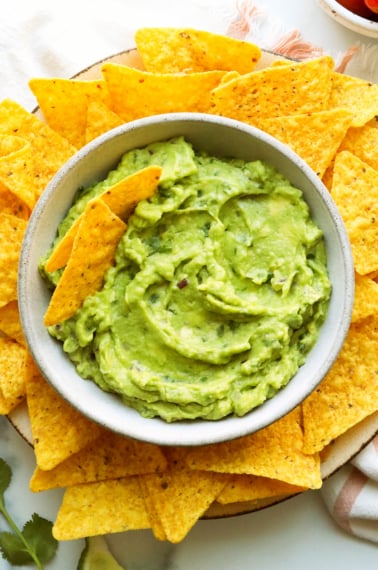
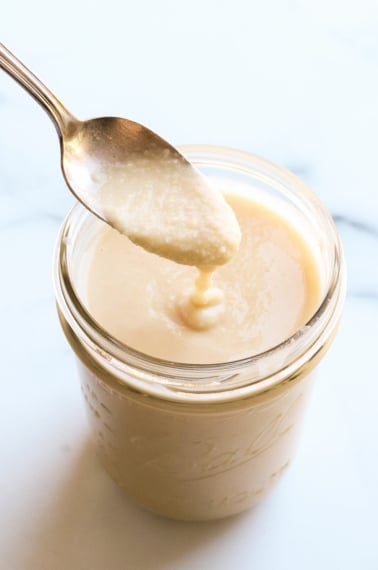
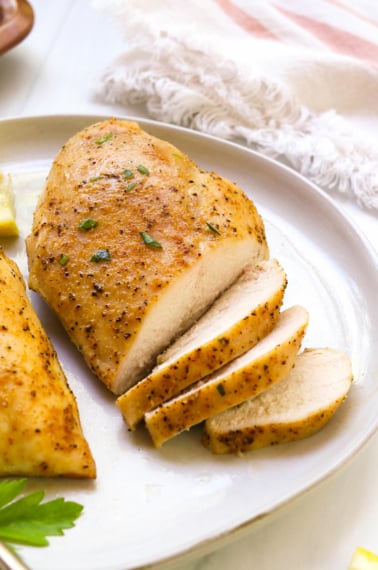






You can make the following types of flours at home. Using a Vita-Mix is the easiest way, but a food processor, blender or even a coffee grinder (if you don’t need to much) will work.
-Almond
-Hazelnut
-Walnut
-Rice
-Quinoia
-chickpea
– Any dried beans (use as thickeners for soups, stews or for making veggie dips
Hopes this helps.
I recommend Ammin Nut Company, http://www.amminnut.com/ They’re a small family-run place in California. I just got a Vitamix, so I can’t wait to try making my own almond flour! I’ll pick up some blanched, silvered almonds at TJs.
By the way, for those of you on the fence, if you call Vitamix directly, they can do a 3-payment plan for you. I got a great deal on a refurbished machine that way. Google for a coupon code for free shipping too.
Hi Megan, Can you tell me which Vitamix you recommend? I tried clicking the link under your “recommended products” section, but when you click on the Vitamix, it takes you to the page for the juicer 🙂 I did a search myself on Amazon and there quite a few models. I had a little sticker shock when I saw how pricey they are, but considering how much almond flour I use, this would pay for itself for that alone within a year. Now, if only they’d open a Trader Joe’s in my area of PA! (for now, I’ll have to stock up at the one in NJ when I go to visit family once a month!)
Hi Cheryl!
This is the Vitamix model that I own and love: http://amzn.to/HGGgG8
It’s an older model, and therefore much cheaper than some of the newer versions– but I also find that it’s more durable! I’ve used the newer model, and actually prefer mine, so I’d buy this one again in a heartbeat. (And will, if mine ever breaks!) If you order it on Amazon, like I did, it comes with free shipping and a 5 year warranty, too!
With how much almond flour, nut butters and almond milk I’m able to prepare at home, they absolutely pay for themselves! 🙂
FYI – Costco has begun carrying this blender regularly in stock and the fancier new version when trade shows have been coming into town. It might be another way to get a discount on this expensive (but worth it) blender.
Hi, Vitamix will sell you a “refurbished” mixer for about $100 cheaper; I purchased one through them about 3 years ago, and have been VERY pleased. They also give you the regular “new mixer” warranty, recipe book, etc. and were wonderful to work with over the phone. I’ve purchased the “dry” container since, and the almond flour comes out beautifully fine and fluffy.
Hi Cheryl, You might also check out QVC for a Vitamix. They have featured one as their today’s special value in January for the last two years. I got my new one for $399 with free shipping. It has a 64 oz container, is variable speed, has a 5 year warranty and came with a cookbook plus a drinks book. I have a 20 year old Vitamix that still works fine, but the new one was such a good buy that I couldn’t pass it up. QVC has Vitamixers on their website regularly too.
Hi Megan! So, If you make almond flour using whole raw almonds, with the skins on them, will it just be grainier, or will it be the same with little specks of the skin color? Lots of Love, Thank yah bunches, Grace
Yes, I actually just grind down whole almonds now– it’s quick and easy! Just a little darker, due to the skins…
Hi Megan I am confused? When I grind down whole almonds it makes my almond butter. Do I need to grind it longer to make flour?
Hi Suzanne! When you grind whole almonds into almond butter, they actually go through the “almond flour stage” quickly at the beginning of that process. It only takes 30-60 seconds in a blender (depending on the power) to create almond flour, while it usually takes more than a few minutes to grind them down into butter.
My concern is that the Trader Joes Almonds are not Organic… and I was under the impression that almonds are one food you want to buy organic…
Yes, organic is always ideal, but I’ve found it very challenging to find blanched organic almonds. So, that seems to be the compromise if you want perfect-looking cookies.
I’ve actually started grinding my own almond meal for baking, since Trader Joe’s does offer organic whole almonds now, so that’s always a good option, too!
I just found a local farm that sells organic raw almonds. Haven’t order them yet, literally just found them. Site is organicalmondsraw.com I will let you know how they look when I received them. Made lots of almond milk today, and meal is in the oven right now, getting ready to attempt almond flour. Did I read somewhere that you can freeze almond milk? I made too much. Thank you for such a great and insightful website. Love reading it all.
Am going to try the almond flour from Azure standard as it has a good
price and delivers to next town.
Read on one website about the almond pasteurization that is required.
so called different stores to find out how their almonds or other nuts
were treated. Costco said all Kirkland labeled nuts are treated with PPO. Some places steam pasteurize and if roasted , that is considered pasteurizing…
What coffee grinder do you use? wanted one for grinding up cinnamon sticks,anise seeds…
Yes, almond pasteurization is required on all almonds in the USA, unless you can find a source directly from a local farmer. Many raw food websites offer imported Italian almonds, though, which are supposed to be truly raw. I’ve also seen the Italian raw almonds popping up at Whole Foods lately!
This is the coffee grinder I use, and I highly recommend it: http://amzn.to/INo9ni
Hi All,
I love the products sold by Matt Monarch at RawFood World. If I recall correctly he has been able to source truly raw almonds. Check out at http://www.rawfoodworld.com –
What does PPO mean?
Hi! I’m so glad I found this! I have been using Bob’s Red Mill almond flour/meal, not knowing that everybody seems to hate it. I just bought a Vitamix last week, so as soon as Trader Joe’s opens I’m heading out to buy some blanched almonds so I can make my own almond flour! Hopefully it turns out much better than Bob’s Red Mill.
I’ve really started looking forward to your posts. Love the grain-free desserts. Keep em comin!
Also, I’d been wondering about the home made almond flour too, so thanks for doing the leg-work! I would have done the same thing you did: try the food processor and then the Vitamix (or vise versa). I’m stocked up on the Trader Joe’s almond meal (have to travel to get to one, so stock up on whatever I can when I can), and you’re right, it doesn’t make very pretty food, but it does the job 😉
I actually make my own almond flour by making almond milk, dehydrating the pulp, then grinding the pulp down into a flour in the VM. Then you get two uses out of 1!
I’ve never had luck with turning my almond pulp into flour– the texture is always off! You’ll have to share your secret with me. 😉
Hey girl 🙂 not sure this is much of a secret but here is video I filmed on how to do it http://girlonraw.com/2010/09/3596/
Oh hey and I just saw you are based in LA. I am coming from Saudi Arabia to Long Beach next week for 10 days – so excited. Any places I MUST see? I am so excited too as I am meeting up with my gal pal Kristen Suzanne (I see you have her in your blog list) too 🙂 xxx
Thanks for the video! I’ve actually never been to Long Beach, but I usually recommend avoiding all the tourist-y areas if you plan on visiting LA. I like to take visitors to Griffith Park or the Hollywood sign for a hike, instead!
Hope you enjoy your visit with Kristen! 🙂
Perfect! I also love using almond flour, but hold out on purchasing it because of the price. I too thought, “oh I just won’t bake as much.” Yeah right! Thanks for sharing this on the blog. Have a great weekend!